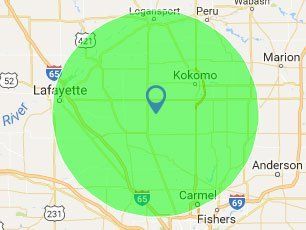Don't Let Pesky Wildlife Invade Your Space
Beavers
Beavers invading your property? The most common complaints include the following:
• Area flooded due to beaver dam
• Creek destroyed by beaver activity
• Trees destroyed by beaver activity
Beaver Species:
The American Beaver (Castor Canadensis) is the largest rodent in North America, and the second largest in the world. They can reach up to 45 inches long and 70 pounds. Beavers mate for life, and mating occurs in the winter. A litter of 1-4 young is born in May. The young are born with fur and open eyes, and are ready to swim within 24 hours. They reach independence in about two years and set out to find their own territory.
Beaver Behavior:
Beavers form family units of around eight members, and mark their territory with urine-marked mud puddles. They are primarily nocturnal, and gnaw down trees and twigs, and bring them back to the home den. They store twigs for feeding. They are good engineers, and build dams in streams to make a pond. They build a lodge within this pond, in which they live. They will also build canals in order to travel and transport wood. When in danger, they may slap their tails on the water as a warning signal to other beavers. They primarily eat bark and the soft wood under the bark, called cambium.
Nuisance Concerns:
The main problem is that they flood areas with their dams. This can cause a number of problems, such as timber loss, flooding of property, or flooding of roadways. Some people complain about tree destruction, but this is a minor problem compared to the flooding problems.
Beaver Diseases:
No important diseases are commonly transmitted to people by this animal. But rare cases exist. Aside from rabies, a virus found in many wild mammals, beavers have been known to spread giardia, a protozoan parasite that causes gastrointestinal distress. Other mammals, including humans, can get giardia, otherwise known by the name of Beaver Fever. Giardia lives in any water and can be present in people even if symptoms of the disease do not manifest.
How to get rid of Beavers:
The method for beaver removal is through trapping, habitat modification, and exclusion. Traps are placed in high activity areas. Putting together a beaver removal strategy is beneficial in eliminating your beavers and solving your beaver problem. This includes inspection and evaluation of the beaver damage and to identify travel ways, lodges, slides, dive holes, bank dens, and scent mounds. Beaver dam removal is a very important key in restoring proper water levels in retention ponds and drainage ditches.
Call 765-586-2971 today! We're standing by to help.
We provide emergency
services. Call us at 765-586-2971 now!


